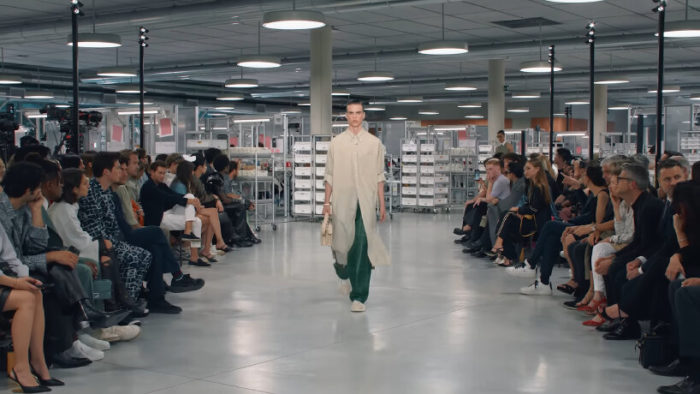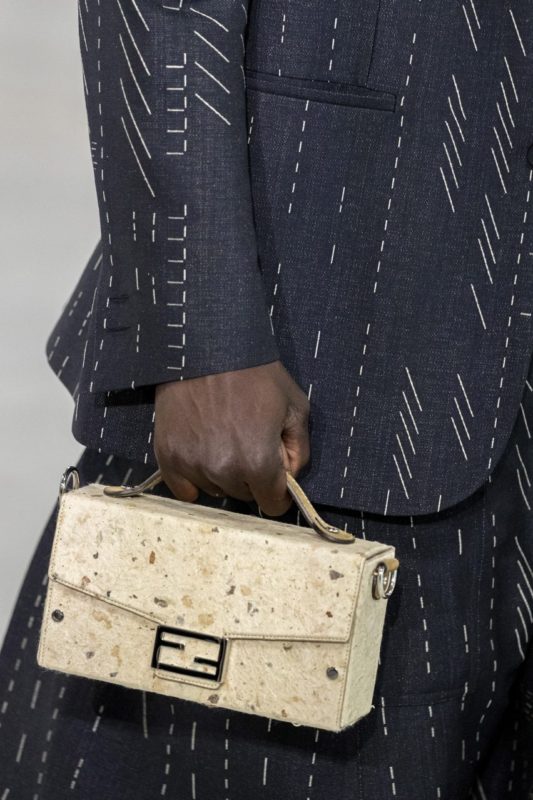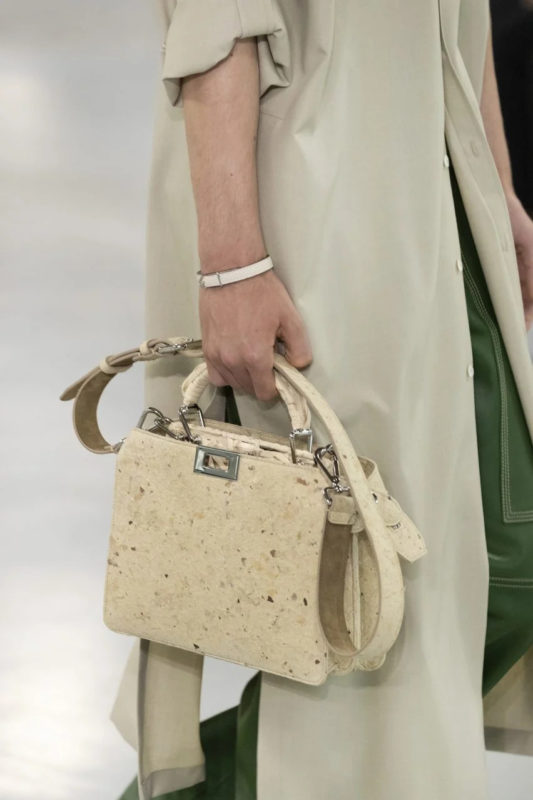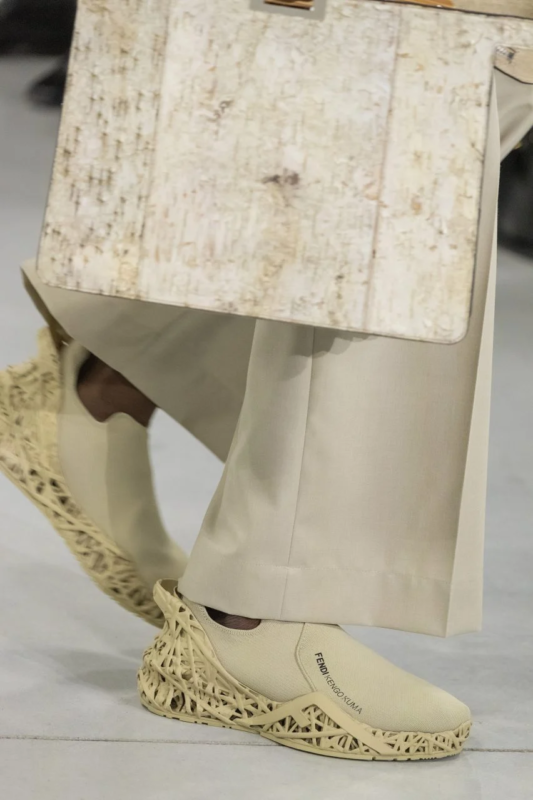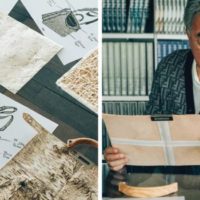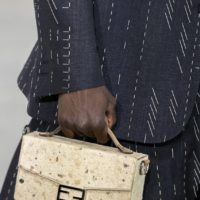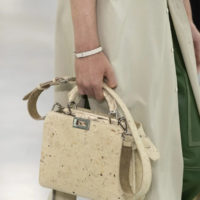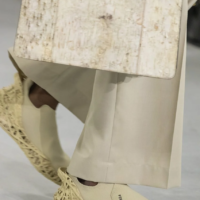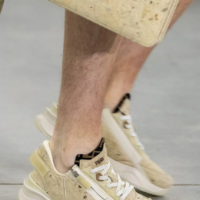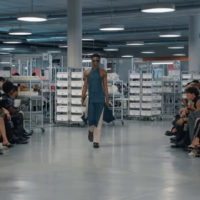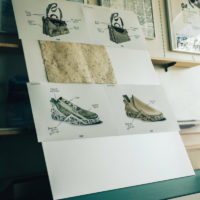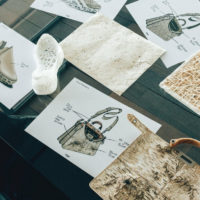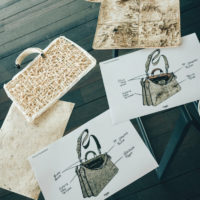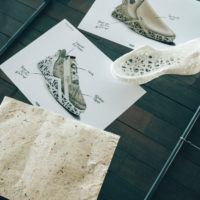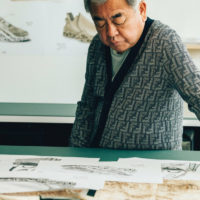To complement their latest collection for men, the Italian fashion brand Fendi teamed up with Japanese architect Kengo Kuma to create a line of accessories that pay homage to traditional Japanese handicrafts. In June, these products were featured at the Pitti Uomo menswear show in Florence, Italy, where Fendi presented their Spring Summer 2024 menswear collection in the Piuarch-designed Fendi Factory.
Silvia Venturini Fendi, the brand’s artistic director of menswear and accessories, put it thus way, “Kengo Kuma has always stood out to me as a pioneer in the field of naturalist architecture because he recognized the value of incorporating elements of the natural world into the design of buildings, inside and out. His creations skillfully combine futuristic elements with his personal history.”
“His Japanese perspective on savoir-faire is one I can relate to, as I believe it to be a deeply held value in both Japan and Italy. This collaboration with Kengo Kuma not only opens up lines of communication between Fendi and architecture but also between Fendi and another designer and their preferred craftspeople and resources.”
Fendi’s Spring Summer 2024 Collection
Using natural materials and traditional Japanese craft skills, Kuma reimagined the Fendi Peekaboo bag, Baguette Soft Trunk, and Flow Sneakers for the partnership. Waranshi, a combination of washi paper from cotton and tree bark fibers, was used to create several bags. In Japan, Washi paper is commonly used in origami, lantern-making, and kimono decoration.
The bag’s foundation is made from waranshi, a delicately textured cloth. The embellishment on the outside of the bags is its uneven, scattered surface, reminiscent of handmade paper. The Peekaboo bag, the Baguette Soft Trunk, and the Flow sneakers all had the flawed waranshi on their outsides.
They also made a second bag out of light birch bark, which they said references Fendi’s signature Pequin stripes. The bag’s outside is raw bark and has a Tuscan olivewood shape and fittings. Fendi’s Peekaboo bag took design cues from yatara ami weaving, a practice that employs tiny fragments of bamboo to create intricate latticework.
Kuma designed two versions of Flow trainers for the event, one with a recycled poly-cotton knit upper and the other with a waranshi top, which took their sole design cues from ancient textile techniques. The designer also rethought the Flow sneaker, giving it a buttoned and zippered upper, cork insole, and molded sole made from undyed, organic ethyl vinyl acetate (EVA).
As Kengo Kuma put it, “As an architect and designer, I’ve always placed a premium on a focus on nature and craft. In response to Fendi’s request for my thoughts on their handbags and footwear, I pictured little architectural feats on a human scale. To demonstrate our mutual love of nature, airiness, and creativity, I have reimagined some of Silvia Venturini Fendi’s most iconic menswear designs using traditional Japanese techniques and materials.”
“We recognize that large-scale innovation is never the product of a single person; instead, it is a collaboration between many hands and brains, as well as a variety of abilities and resources from all over the world.” Said Silvia Venturini Fendi.
- Courtesy of Fendi
- Courtesy of Fendi
- Courtesy of Fendi
- Courtesy of Fendi
- Courtesy of Fendi
- Courtesy of Fendi
- Courtesy of Fendi
- Courtesy of Fendi
- Courtesy of Fendi
- Courtesy of Fendi
- Courtesy of Fendi
- Courtesy of Fendi
- Courtesy of Fendi


